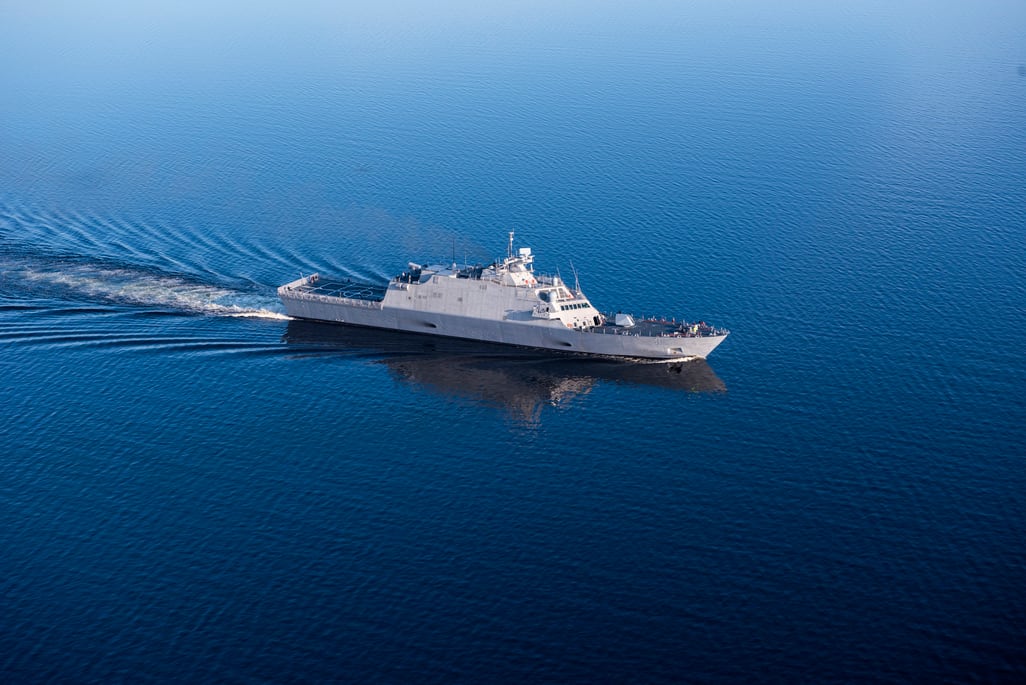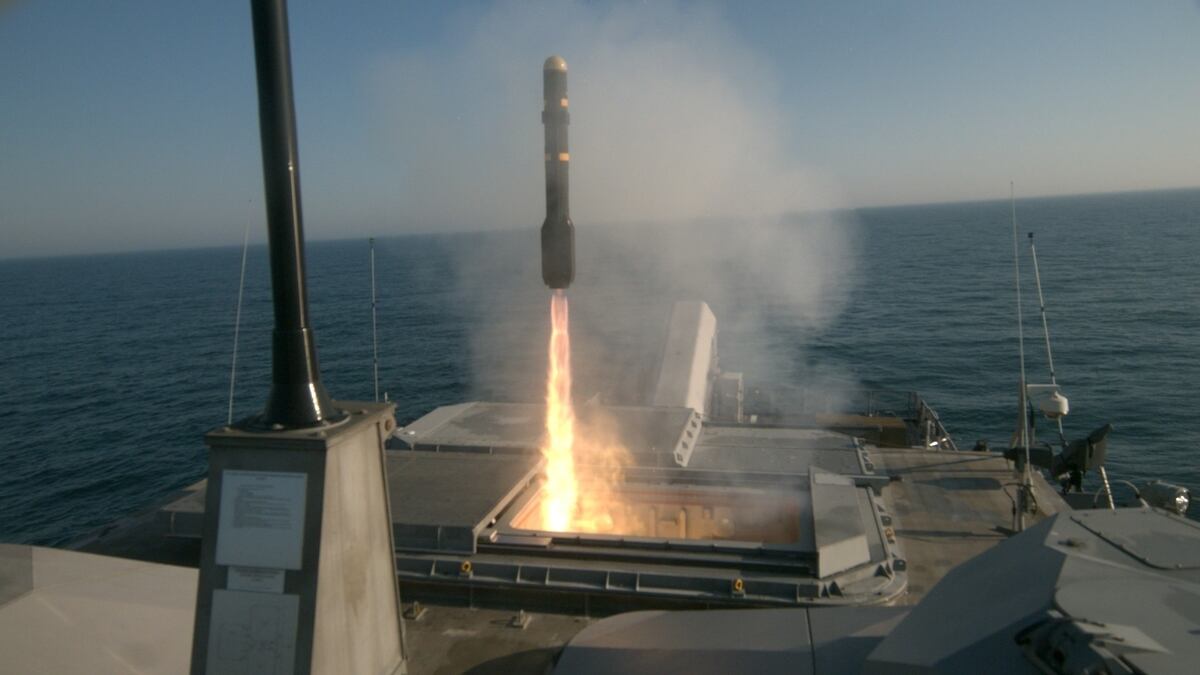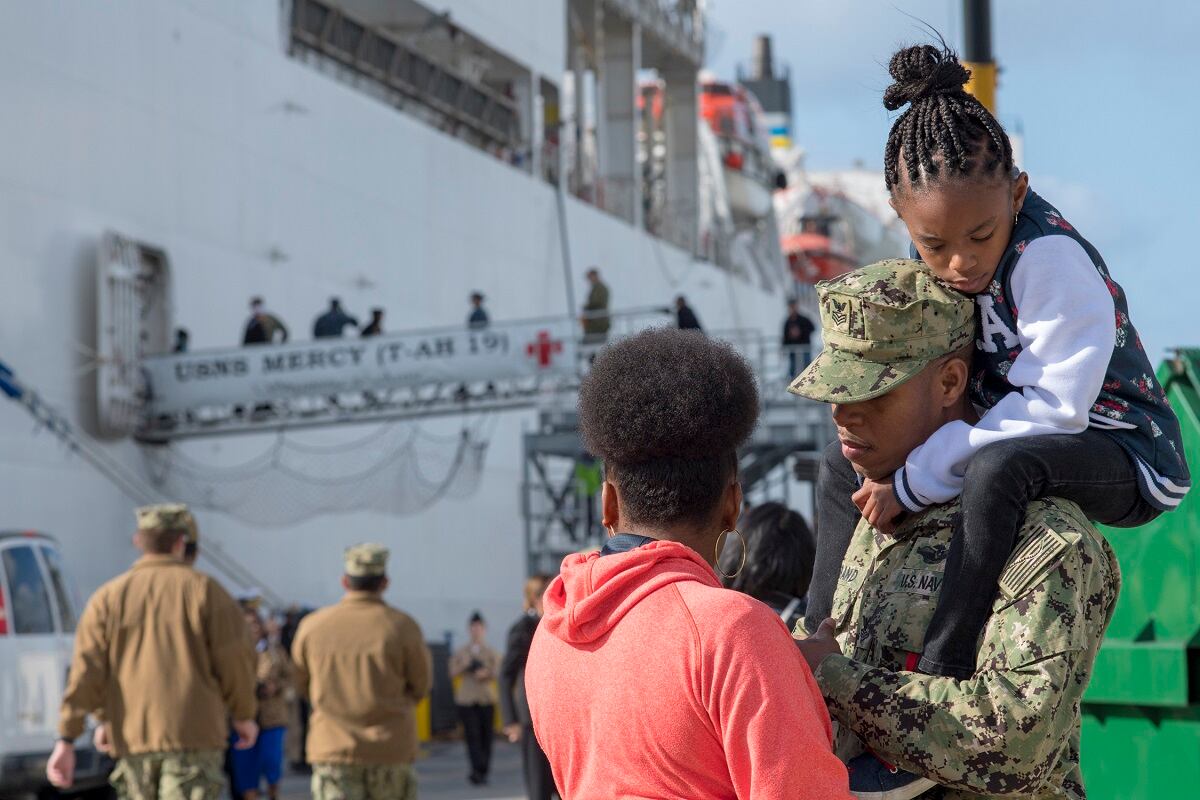There are no more tickets available for the commissioning of the Navy’s newest Freedom-class littoral combat ship, the Sioux City, at the U.S. Naval Academy.
The ceremony begins at 9 a.m. on Saturday, Nov. 17, with U.S. Sen. Joni Ernst, R-Iowa, slated to deliver the keynote address.
The warship’s sponsor, Mary Winnefeld — the wife of retired Adm. James “Sandy” Winnefeld, the former vice chairman of the Joint Chiefs of Staff — will utter the first order to “man our ship and bring her to life!”
The commanding officer of the Sioux City, Cmdr. Randy Malone is a former Arkansas Army National Guard soldier who became an Electrician’s Mate in the Navy 32 years ago before working his way up the ranks to helm the warship.
He’ll lead the core crew of 70 officers and enlisted sailors to Sioux City’s homeport at Naval Station Mayport in Florida.

Named after the fourth-largest city in Iowa, the Sioux City will be the 13th LCS to join the fleet and the sixth of the Freedom-class variant built by the team of Lockheed Martin and Fincantieri Marinette Marine in Wisconsin.
Freedom-class vessels rely on a traditional mono-hull, not the trimaran design of the Independence version, but both types are expected to perform a wide range of missions: minesweeping, delivering humanitarian aid, ferrying special operations troops to coastlines, prowling for submarines and slugging it out with enemy vessels using the Surface-to-Surface Missile Module.
It all depends on how they’re outfitted. Both the Sioux City and sister LCS Wichita were delivered to the Navy at the Fincantieri Marinette Marine shipyard on Aug. 22. The Wichita is designated for the East Coast Mine Warfare Division and the Sioux City is destined for the East Coast Surface Warfare Division, according to Naval Sea Systems Command.
The Sioux City will join the Freedom-class Milwaukee in Mayport.
On May 11, the Milwaukee conducted a live-fire exercise that shot off four AGM-114L Longbow Hellfire missiles to destroy small surface attackers. The Navy envisions littoral combat ships employing a 24-shot vertical launch system to take out swarms of speedboats and other complicated assaults.

Initiated in 2002, the controversial LCS program initially was dogged by cost overruns, design snafus, shipyard delays and other gremlins. Pentagon leaders, however, now insist they’ve mended the glitches and project that the LCS fleet will become the second-largest class of warships Navy over the next decade, trailing only guided-missile destroyers.
The Navy counts 31 vessels from both variants that have been built or are on the way.
The littoral combat ships are expected to fulfill the capabilities formerly held by both the mothballed Oliver Hazard Perry-class frigates and the remaining but aging fleet of Avenger-class fleet of minesweepers.
The Pentagon hopes to do that by installing “plug-and-fight” technology packets, which promise to keep the LCS balanced on the cutting edge of maritime warfare, but critics have voiced concerns about vessels' ability to survive enemy fire.
Ongoing LCS experiments in the Pacific Ocean have been designed to exploit the warships' speed and shallow drafts — the Sioux City boasts a navigational draft of only 14 feet and relies on two gas turbine engines, a pair of main propulsion diesel engines and four water jets to reach speeds above 40 knots.
RELATED

Those characteristics should free the littoral combat ships to quickly and nimbly enter areas destroyers and cruisers can’t go — hiding in the scattering of atolls and shoals in the contested waters of the South China Sea and other potential conflict zones — to shoot at bigger surface vessels and then scoot to avoid counter-fire.
But surface warfare skippers have been tight-lipped about how well the experiments have demonstrated the warships' ability to exert sea control and deterrence against peer- and near-peer enemies such as China and Russia.
For those unable to attend the ceremony in Maryland, the Navy will broadcast the commissioning live online here.
Prine came to Navy Times after stints at the San Diego Union-Tribune and Pittsburgh Tribune-Review. He served in the Marine Corps and the Pennsylvania Army National Guard. His awards include the Joseph Galloway Award for Distinguished Reporting on the military, a first prize from Investigative Reporters & Editors and the Combat Infantryman Badge.




